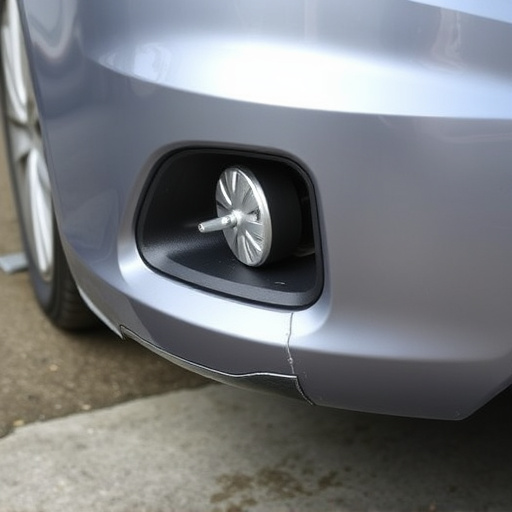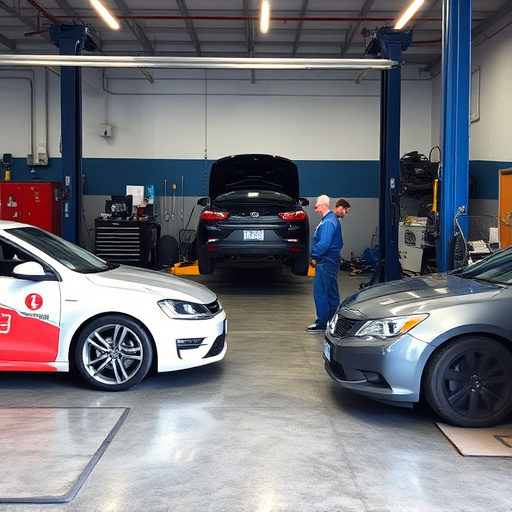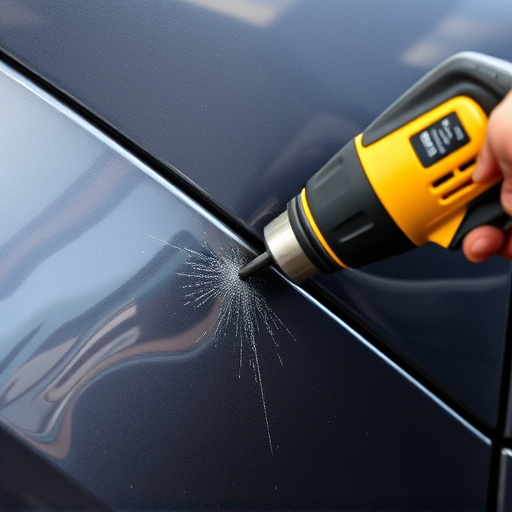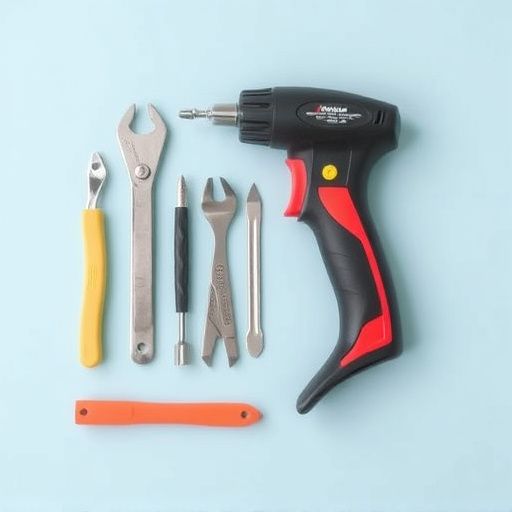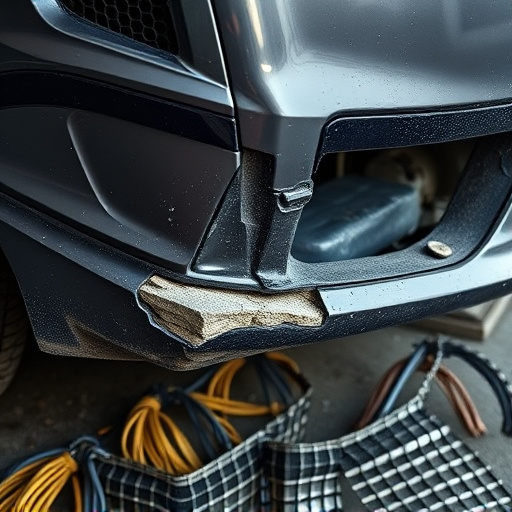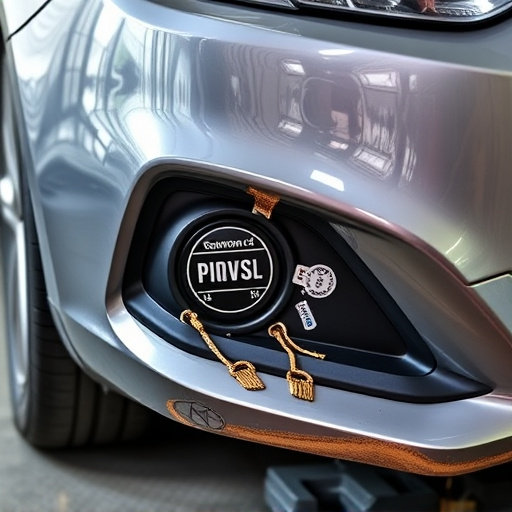Mercedes radar recalibration is crucial for maintaining advanced driver assistance systems (ADAS) after structural changes from repairs or accidents. Windshield or panel adjustments can disrupt sensor alignment, leading to inaccurate safety feature readings. Regular calibration ensures optimal performance of adaptive cruise control and lane-keeping assist, adhering to Mercedes-Benz's high standards in both vehicle construction and technology.
Mercedes vehicles are equipped with advanced radar systems that ensure safe and precise driving. However, windshield or panel shifts can disrupt these sensitive sensors, leading to potential issues in performance. This article explores the importance of Mercedes radar recalibration after any such shifts. We delve into the functioning of Mercedes radar systems, how shifts affect their accuracy, and the essential process of recalibration to restore optimal detection capabilities.
- Understanding Mercedes Radar Systems and Their Sensitivity
- When Windshield or Panels Shift: Impact on Radar Performance
- Recalibration Process: Restoring Accurate Detection After Shifts
Understanding Mercedes Radar Systems and Their Sensitivity
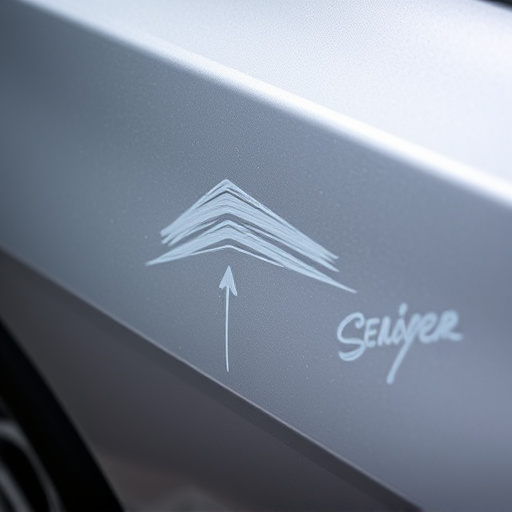
Mercedes radar systems are renowned for their advanced technology and sensitivity, designed to ensure optimal safety performance. These radar sensors, often integrated into the car’s front or rear bumpers, play a crucial role in adaptive cruise control, collision avoidance, and lane-keeping assist—features that have become standard in modern Mercedes vehicles. Their precision is critical, making them highly sensitive to any potential interference or misalignment. Even minor shifts in the windshield or vehicle panels can disrupt the radar’s normal functioning, leading to inaccurate readings and potentially compromising safety systems.
Regular maintenance, including periodic Mercedes radar recalibration, is essential to counteract these effects. After a car collision repair or frame straightening, for instance, where structural changes are made, recalibration ensures that the radar system accurately tracks and reacts to surroundings, enhancing overall driving safety. It’s a crucial step in keeping up with the high standards set by Mercedes-Benz in both vehicle construction and advanced driver assistance systems (ADAS).
When Windshield or Panels Shift: Impact on Radar Performance

When a Mercedes’ windshield or panels shift, it can significantly impact the performance of its radar systems. These sensors play a crucial role in advanced driver-assistance systems (ADAS), including adaptive cruise control and lane-keeping assist. Any misalignment can lead to inaccurate readings, causing the car’s safety features to malfunction. For instance, if a collision or accident occurs, the radar may not detect obstacles or other vehicles correctly, potentially leading to severe consequences on the road.
Regular vehicle body repair, including fender repair and windshield replacement, is essential to maintaining optimal radar recalibration. A visit to a reliable collision repair shop ensures that any structural changes or damages are addressed accurately, ensuring the Mercedes’ safety systems function at their highest levels. This process involves sophisticated techniques to realign the radar sensors, guaranteeing precise performance in various driving conditions.
Recalibration Process: Restoring Accurate Detection After Shifts
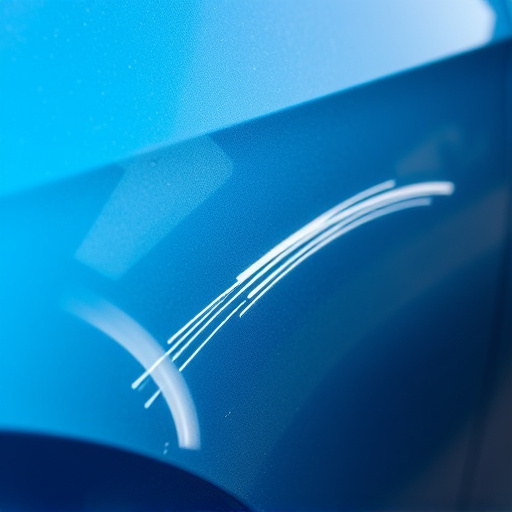
The Mercedes radar recalibration process is designed to restore accurate detection after shifts in the vehicle’s windshield or panels. This advanced technology uses a series of precise signals and algorithms to map the surroundings, ensuring the safety system functions optimally. When these components experience changes due to events like accidents, weather conditions, or hail damage repair, the calibration can be affected, leading to potential performance issues.
During the recalibration process, specialized tools are utilized to reset the radar’s internal settings, compensating for any shifts in position or damage that may have occurred. This involves a meticulous procedure where technicians ensure the radar sensor is correctly aligned and programmed with up-to-date parameters, guaranteeing seamless integration with the vehicle’s safety systems. As part of regular auto maintenance, keeping the Mercedes radar recalibrated is essential to maintain optimal performance and safety features, especially after any incident that could impact the windshield or exterior panels.
Mercedes radar recalibration is a crucial process to ensure optimal performance and safety. Windshield or panel shifts can significantly impact the sensitivity of these advanced systems, leading to reduced detection accuracy. Fortunately, the recalibration process is designed to restore precise radar detection, addressing any discrepancies caused by structural changes. Regular maintenance and timely recalibration are essential for Mercedes owners to maintain the integrity of their vehicle’s safety features, ensuring a secure driving experience.



